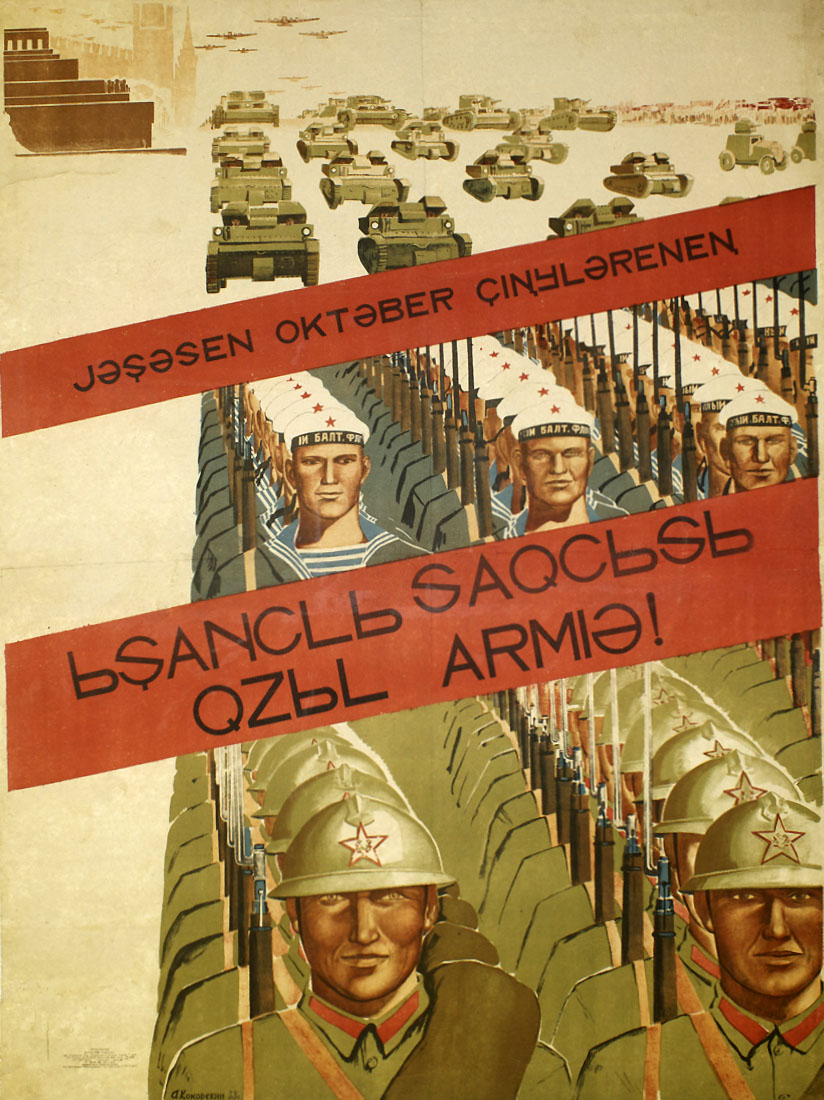
Long Live the Red Army the reliable watchdog of the gains of October!
Número de Cartel: PP 703
Tamaño: 46x35.5
Tipo de cartel: Litografía y Offset
Fecha de publicación: 1933
Editores: Editors: Povolotskaia, Agishev; Technical Editor Gusev.
Información técnica: Izogiz No. 6216; I-35. No. 1288; Language: Tatar; “Long Live The Russian Army” [poster title]; Standard Format 82 x 110; Volume 1 sheet of paper; Price 60 kopeks.
Ediciones: 1,500
Número de Glavlit: B-34096
En el catologo: PP 703 Military; Sister Poster PP 435 (same artist, same theme)
Idioma: Tártaro
Artista: Kokorekin, Aleksei Alekseevich — Кокорекин, Алексей Алексеевич
Aleksei Alekseevich Kokorekin was born in a part of Russian Empire that was on the border of the Ottoman Empire. He began is studies in the cites of Krasnodar and Poltava. In 1918, Kokorekin attended the Krasnodar School of Painting and Sculpture where he graduated in 1927. From 1927 to 1929, Kokorekin attended the Kuban' Art and Pedagogical School in Krasnodar. While living in Krasnodar, he worked both as a poster designer and a decorator for the town theater. ...
Leer más...
Imprenta: Mosoblpoligraf (Moscow Regional Printers), Moscow — Мособполиграф (Московская областная полиграфская), Москва
Mosoblpoligraf was a regional, state-owned printing trust created in the mid-1920s during the period when the Soviet Union was consolidating its best and most productive printers. The 5th Lithography Workshop, 12th Lithography Workshop, 16th Lithography Workshop, and the 26th Lithography Workshop were all Moscow printers under the Mosoblpoligraf banner.
Leer más...
Editorial: Ogiz-IzoGiz, Moscow-Leningrad — Огиз-Изогиз, Москва-Ленинград
Ogiz was the Association of the State Book and Magazine Publishers. Its main offices were located in Moscow and in Leningrad. The Sovnarkom of the Russian Socialist Federative Soviet Republic established Ogiz in 1930 to centralize publishing activities under a state monopoly in order to eliminate duplication of printed material, streamline and control publishing production and output, and to create a base for marketing books, training and technical manuals. In 1931, the Central Committee of the USSR ...
Leer más...